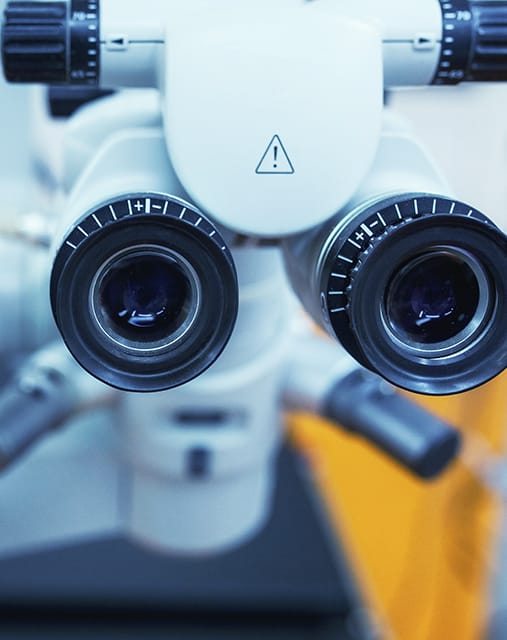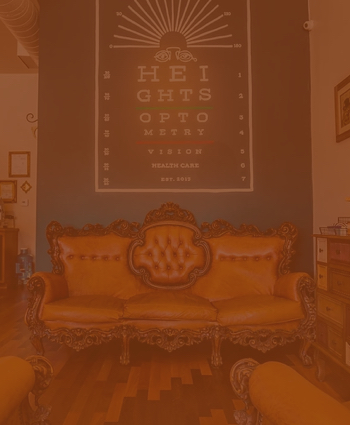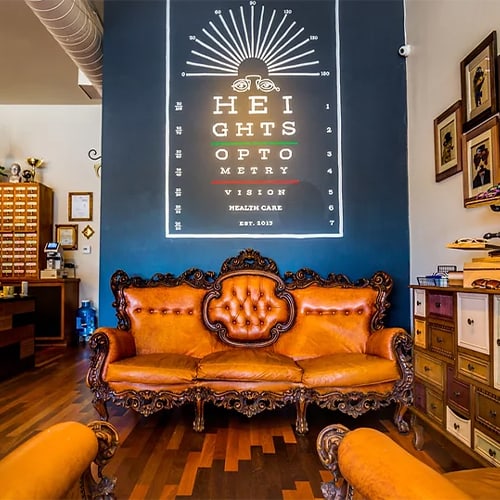Preserving Your Long-Term Eye Health
Our doctors are committed to your long-term eye health. We detect, monitor, and treat eye diseases like glaucoma, cataracts, and age-related macular degeneration (AMD).
Eye disease can appear in many forms, and through consistent and frequent eye exams we can help detect developing eye diseases early and prepare a personalized treatment plan for your visual needs.
Contact us to schedule an appointment and get a comprehensive eye health and vision check-up.
Eye Disease Management Starts Early
At Heights Optometry, our doctors are well-equipped to assist in detecting and treating early signs of eye disease through comprehensive eye exams.
Our doctors believes in keeping you informed, educated, and comfortable throughout the process. Many forms of eye disease start out with little to no symptoms, so consistency is key when it comes to your vision check-ups.
Eye disease management starts early—visit us for your comprehensive eye exam today.

Navigating Different Forms of Eye Disease
Because eye disease comes in different forms, understanding various eye diseases can help you recognize early signs and schedule an eye exam to begin the diagnosis and treatment process.
Glaucoma
Glaucoma is a group of eye conditions that cause damage to the optic nerve and can lead to vision loss and blindness. The optic nerve plays a vital role in your sight, as it carries the information your retina receives to your brain, providing vision.
Common signs and symptoms of glaucoma can include:
- Patchy blind spots in peripheral vision
- Severe headaches
- Blurred vision
- Tunnel vision (in advanced stages)
Damage from glaucoma can be caused by high pressure in the eye, known as intraocular pressure. However, it can also develop with normal intraocular pressure levels.
Cataracts
Cataracts develop when the normally clear lens of the eye becomes clouded. Light enters your eye through the lens before it is processed and sent to your brain. Cataract formation begins when proteins clump together in the lens, preventing clear images from passing through to the back of the eye.
Most cataracts develop in people over the age of 55, but in rare cases, they can develop at a younger age.
Common signs and symptoms of cataracts can include:
- Sensitivity to light and glare
- Colors appearing faded or yellow
- Cloudy, blurred, or dim vision
Corrective prescription lenses can help provide clear vision in the early stages of cataract development. However, when cataracts begin affecting your daily life and prevent you from going about your daily activities—surgery is the only option to remove them.
Age-Related Macular Degeneration
Age-related macular degeneration (AMD) is a vision condition that damages the macula, which is responsible for central vision. AMD is a progressive condition and a leading cause of vision loss among older adults.
There are 2 main types of AMD:
- Dry AMD is the more common form of the disease and happens in early, intermediate, and late stages. Dry AMD usually progresses over several years and results from the macula thinning with age.
- Wet AMD is the less common form of the disease and results in faster and more severe vision loss. Wet AMD occurs when abnormal blood vessels grow in the back of the eye and cause damage to the macula. This damage is caused by abnormal blood vessels leaking fluid or blood into the macula.
Our doctors will check for AMD through a dilated eye exam. A dilated eye exam differs from a regular eye exam and allows more light into the eye. A dilated eye exam allows us to get a more detailed look at your eyes to check for AMD and other issues.
Prevention methods like giving up smoking and switching to a healthier diet can help slow the progression of the disease.
Detecting Glaucoma
Our doctors use a few different diagnostic techniques to help detect glaucoma. If we find a sign of glaucoma, we can develop a personalized management plan to help preserve your vision and eye health.
Applanation Tonometry
Applanation tonometry is used to detect changes in your eye pressure. This type of tonometry test is the most common and considered the most accurate for measuring eye pressure. Applanation tonometry involves the use of a flat-tipped probe that is gently pressed against the surface of the eye.
iCare Tonometer
The iCare tonometer helps detect intraocular pressure (IOP) in your eyes. While not as common as applanation tonometry, this device allows our doctors to perform IOP measurements accurately without the need for anesthetic drops.
Helping You Manage Eye Disease
Our doctors are committed to preserving your eye health. We help you navigate, manage, understand, and treat different forms of eye disease through early detection and treatment.
It’s never a bad time to get some peace of mind when it comes to your eyes—schedule an appointment to check for any signs of eye disease today.

Our Brands
Brands We Carry







Our Reviews
Our Locations
Heights Optometry
- Phone: 619-431-5393
- Fax: 619-431-5393
- Email: [email protected]
- 3404 Adams Ave.
- San Diego, CA 92116
Hours
- Monday: 9:00 AM – 5:00 PM
- Tuesday: 9:00 AM – 5:00 PM
- Wednesday: CLOSED
- Thursday: 9:00 AM – 5:00 PM
- Friday: 9:00 AM – 5:00 PM
- Saturday: 9:00 AM – 2:00 PM
- Sunday: CLOSED

North Park Optometry
- Phone: 619-298-5524
- Fax: 619-298-5524
- Email: [email protected]
- 3068 University Ave.
- San Diego, CA 92104
Hours
- Monday: CLOSED
- Tuesday: 9:00 AM – 5:00 PM
- Wednesday: 9:00 AM – 5:00 PM
- Thursday: 9:00 AM – 5:00 PM
- Friday: 9:00 AM – 5:00 PM
- Saturday: 9:00 AM – 2:00 PM
- Sunday: CLOSED

La Mesa Optometry
- Phone: 619.550.0403
- Email: [email protected]
- 8321 La Mesa Blvd
- La Mesa, CA 91942
Hours
- Monday: CLOSED
- Tuesday: 9:00 AM – 5:00 PM
- Wednesday: 9:00 AM – 5:00 PM
- Thursday: 9:00 AM – 5:00 PM
- Friday: 9:00 AM – 5:00 PM
- Saturday: 9:00 AM – 2:00 PM
- Sunday: CLOSED













